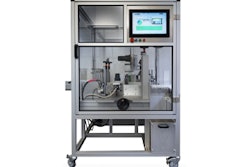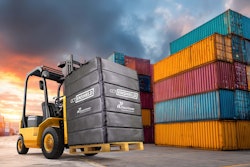
“The ROI on collaborative robots is three times better now,” says one OEM, “and use will continue to increase replacing low level operations or simple human tasks.”
The greatest reason for down time continues to be human error, says the study, and can result in unreliable product quality.
One design engineer at a large food plant sees change coming. “Robotics is used mainly for case packing,” he says, “but in the future it will increase up the line as washdown capabilities improve.”
Forty percent of those interviewed see robots utilized at the front end of the line for direct product handling like filling, dosing and pick and place.
Twenty five percent predict more use in product handling—cutting, coating, and feeding. While thirteen percent cited product front of line use for depalletizing.
End of line will see growth in both palletizing and secondary packing such as tray packers, cartoning, and case packaging.
Source: PMMI Business Intelligence, “The Evolution of Automation 2017.”
Download your FREE 8-page Executive Summary here.
Plan now to attend the Automation Conference & Expo, May 22-23 at the Chicago Marriott O'Hare. Gain a better understanding of the most critical technologies and strategies for improving your manufacturing operation and staying ahead of the competition.
“The ROI on collaborative robots is three times better now,” says one OEM, “and use will continue to increase replacing low level operations or simple human tasks.”
The greatest reason for down time continues to be human error, says the study, and can result in unreliable product quality.
One design engineer at a large food plant sees change coming. “Robotics is used mainly for case packing,” he says, “but in the future it will increase up the line as washdown capabilities improve.”
Forty percent of those interviewed see robots utilized at the front end of the line for direct product handling like filling, dosing and pick and place.
Twenty five percent predict more use in product handling—cutting, coating, and feeding. While thirteen percent cited product front of line use for depalletizing.
End of line will see growth in both palletizing and secondary packing such as tray packers, cartoning, and case packaging.
Source: PMMI Business Intelligence, “The Evolution of Automation 2017.”
Download your FREE 8-page Executive Summary here.
Plan now to attend the Automation Conference & Expo, May 22-23 at the Chicago Marriott O'Hare. Gain a better understanding of the most critical technologies and strategies for improving your manufacturing operation and staying ahead of the competition.
“The ROI on collaborative robots is three times better now,” says one OEM, “and use will continue to increase replacing low level operations or simple human tasks.”
The greatest reason for down time continues to be human error, says the study, and can result in unreliable product quality.
One design engineer at a large food plant sees change coming. “Robotics is used mainly for case packing,” he says, “but in the future it will increase up the line as washdown capabilities improve.”
Forty percent of those interviewed see robots utilized at the front end of the line for direct product handling like filling, dosing and pick and place.
Twenty five percent predict more use in product handling—cutting, coating, and feeding. While thirteen percent cited product front of line use for depalletizing.
End of line will see growth in both palletizing and secondary packing such as tray packers, cartoning, and case packaging.
Source: PMMI Business Intelligence, “The Evolution of Automation 2017.”
Download your FREE 8-page Executive Summary here.
Plan now to attend the Automation Conference & Expo, May 22-23 at the Chicago Marriott O'Hare. Gain a better understanding of the most critical technologies and strategies for improving your manufacturing operation and staying ahead of the competition.





















